While the first hummingbird sighting in the spring is always cause for celebration, the last report of autumn—or even winter—can be equally exciting, especially in the eastern United States.
It’s a myth that leaving your feeders up will prevent birds from migrating. Instead, many experts recommend maintaining hummingbird feeders for at least 2 weeks after you’ve seen the last one in your yard.
Other people prefer to keep feeders going well into winter, and for good reason. Any late stragglers could very well be unexpected species.
Eastern Exodus
The ruby-throated hummingbird is the species that regularly breeds from the Great Plains to the Atlantic. They pretty much flee the U.S. well before winter settles in. The earliest of migrants start pushing south by late July. Peak fall migration occurs in September.
In the springtime, ruby-throated hummingbirds have been documented crossing the Gulf of Mexico on an 18 to 24-hour nonstop journey. For fall migration, Sheri Williamson, author of A Field Guide to the Hummingbirds of North America highlights that the birds seem to be going around the Gulf.

The Yucatan Peninsula works like a funnel for northbound birds, but that’s not the case for hummingbirds headed south from their breeding range. The eBird animation she shares provides a stunning visual of this fall movement wrapping west through Texas and into Mexico. Most ruby-throated hummingbirds winter from southern Mexico to Costa Rica.
Increasingly, hummingbirds are being documented in the U.S. throughout the winter months. It is thought that ornamental plantings might be aiding winter hummingbird survival along the Gulf Coast states and up the Atlantic seaboard.
Since nearly all the ruby-throated hummingbirds have cleared out of the east by October 15, birds encountered in winter could be any number of species.
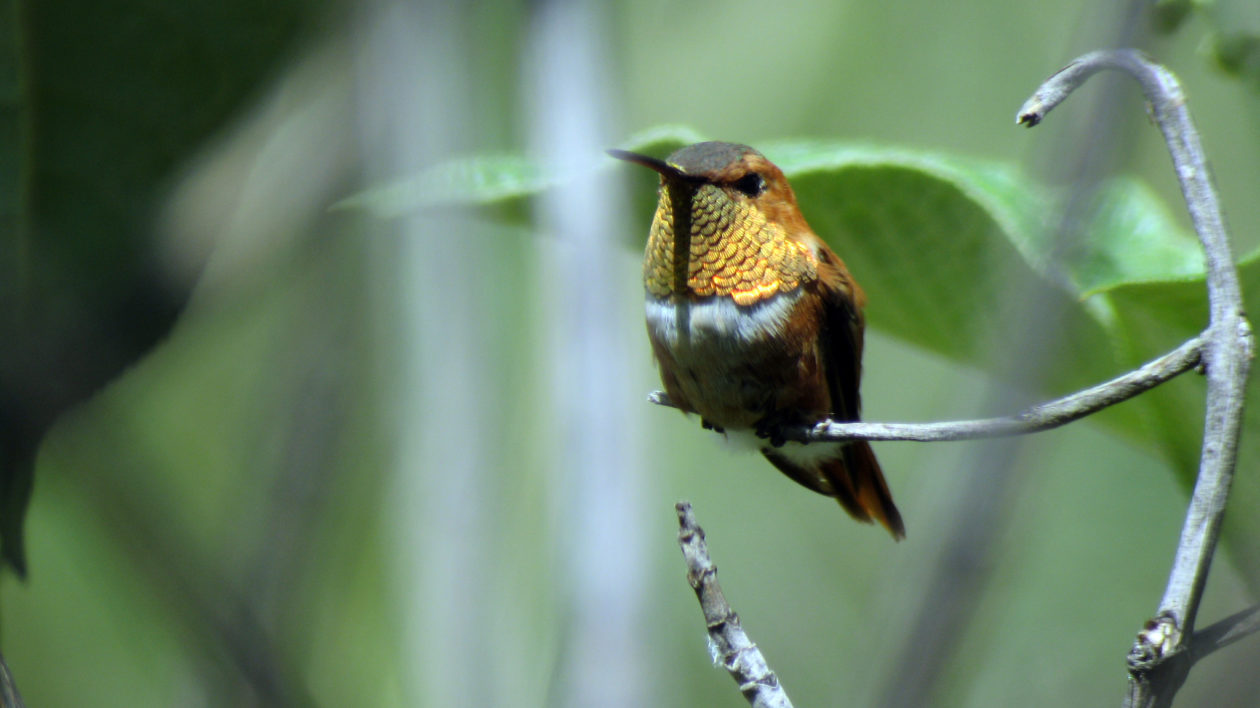
Hearty Northerners
Rufous hummingbirds are the only species that regularly breed in Alaska. They are often considered the hardiest of the hummers.
Rufous generally migrate to the west of the Rocky Mountains, but in winter they are the most widespread drifters to the east. Rufous hummingbirds have been documented in all 50 states.
Renowned birder, author, and radio host Laura Erickson of Duluth, Minnesota, has struck winter rufous gold twice now. From November 16 – December 3, 2004, Erickson’s yard was frequently visited by a rufous hummingbird. Another of the western wanderers arrived in her yard this winter.
On her blog, Laura says, “People keep telling me to bring in my feeders to hasten her on her way. That could certainly force her hand, or wing, but I’m trusting that she knows how autumn unfolds into winter and understands what her migratory options are better than we do.”
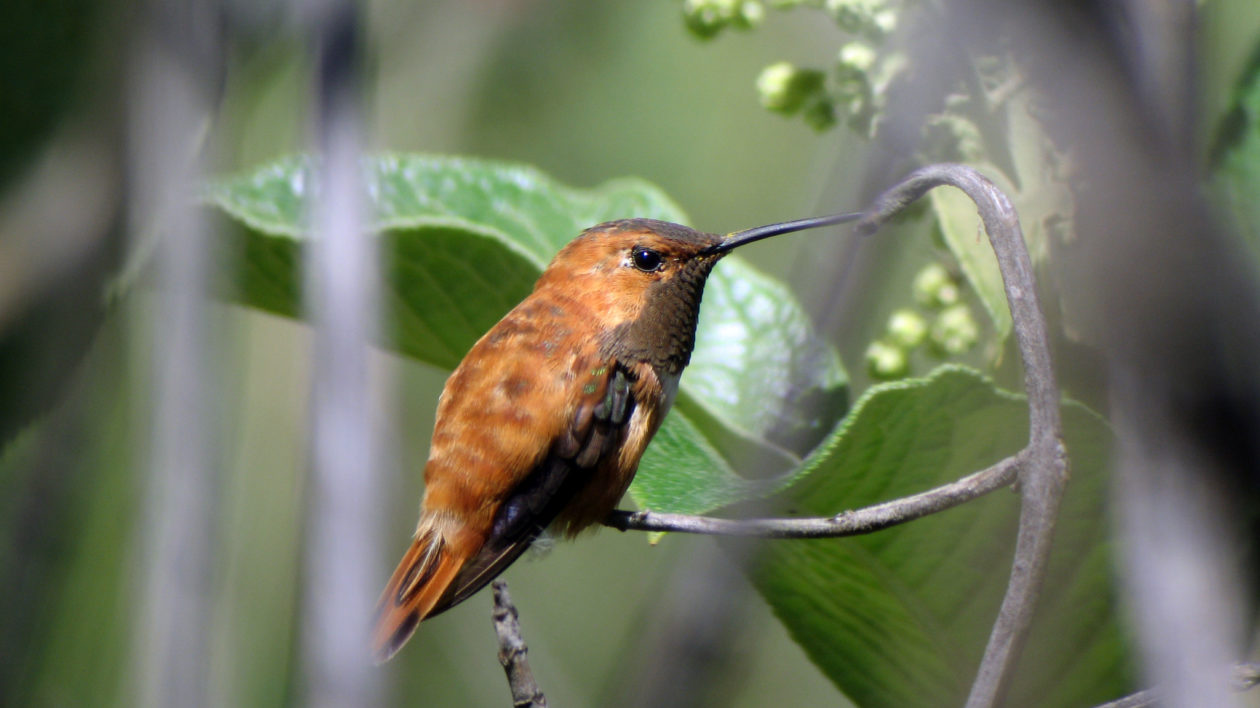
This rufous hummer lingered for weeks in her neighborhood. “Several times since my hummingbird arrived, I’ve asked her how she makes these minute-by-minute and day-by-day decisions about where to be and what to eat, but so far she’s not talking,” Erickson continued on another post.
Erickson and her neighbors were diligent about keeping hummingbird feeders full and thawed. Laura even invested in a heated hummingbird feeder. After a relatively warm day spent feeding feverishly, the little rufous was last spotted at 3:48 p.m. on December 4.
Although this individual wasn’t banded, other winter hummingbirds have been marked and some of them return year after year, so Laura has confidence this bird likely survived. Some hummingbird species, including rufous have the ability to enter a short hibernation-like state called torpor. This helps them survive long winter nights without food.
Although rufous hummingbirds are the most frequent winter stragglers, they aren’t the only surprise visitors.
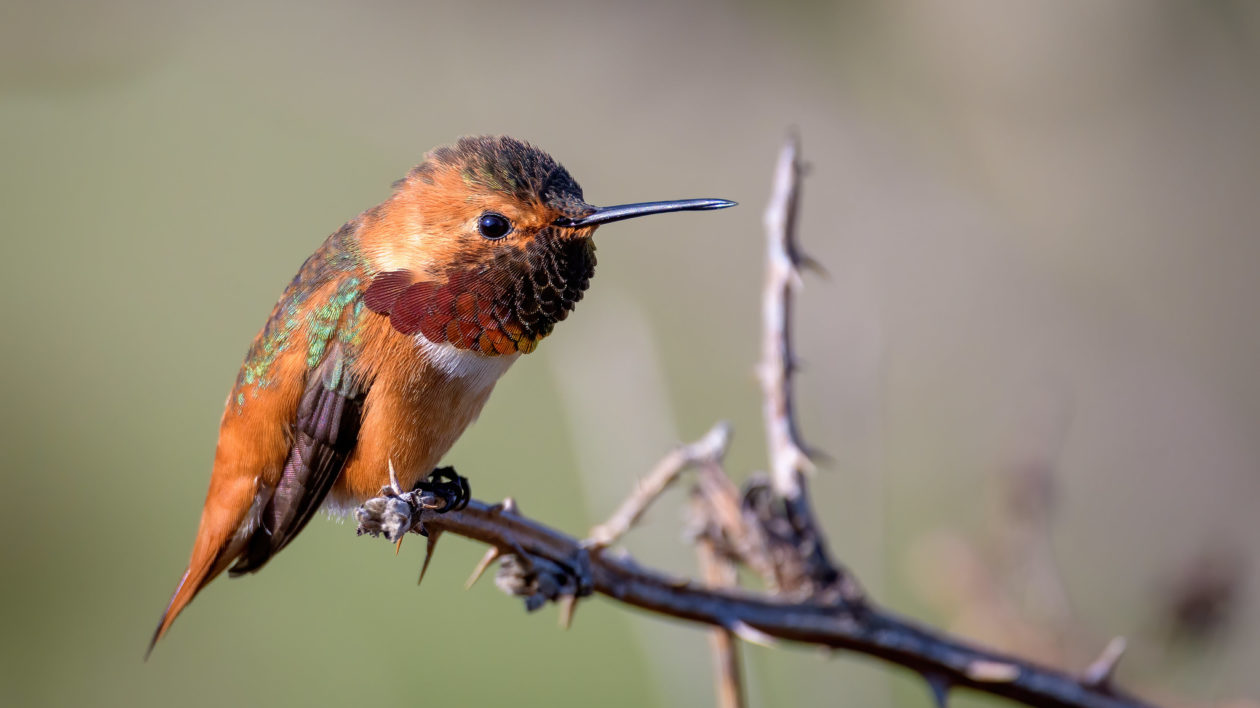
The Drifters
Infrequent but regular occurrences, a number of other hummingbirds show up far outside their expected ranges no matter the season. These rarities cause quite a stir in the birding community.
In many instances, the birds become highly sought after, but it is always essential to respect both the birds as well as the human hosts and neighbors. Highlights for the fall and winter of 2021 are numerous.
The west coast rufous doppelgänger, Allen’s hummingbird shows up regularly in the east. In December 2021 one was banded in Cincinnati, Ohio.

Black-chinned hummingbirds breed from southern British Columbia to central Texas. This species is becoming fairly regular along the Gulf of Mexico in winter. Farther inland, a December bird lingered near Athens, Georgia.
Broad-tailed hummingbirds look like ruby-throated, but certified bird banders can take measurements to separate the two species out. The Hilton Pond Center for Piedmont Natural History in York, South Carolina, bands hummingbird throughout the east. They documented the first broad-tailed for the Palmetto State in September 2021.
Earlier in the fall of 2021, a Mexican violetear showed up in Illinois and then apparently moved on to Vermont. Greg Neise provided a detailed comparison on the American Birding Association’s Rare Bird Alert page.
More expected is the drifting of a few buff-bellied hummingbirds from their south Texas breeding range north along the Gulf. In winter a few individuals make it to Louisiana, Mississippi, and Alabama. During the winter of 2020/2021, one was documented in Virginia.
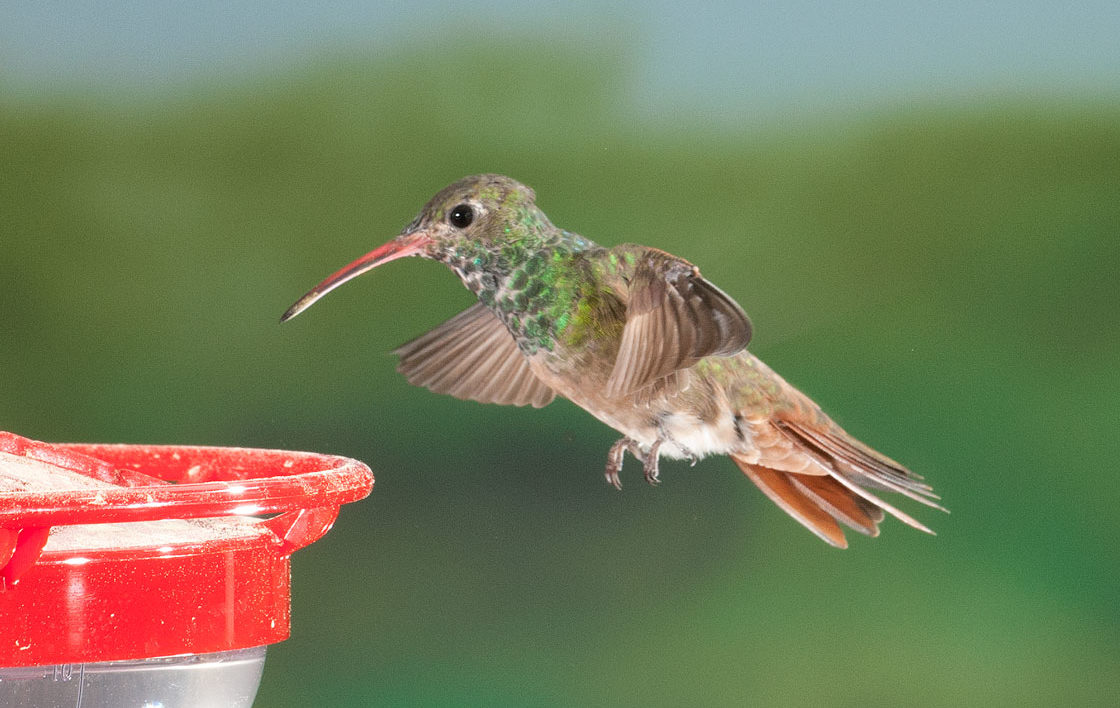
Pacific & Southwest Residents
While most of the country is shocked by any winter hummingbird, for west coast and southwestern folks, a few species can be expected anytime.
The Pacific states are home to Anna’s hummingbirds all year. In the winter, this portly pink-headed sprite can push north into Canada or east to New Mexico. They are prone to drifting. In the fall of 2021, Kentucky recorded the first Anna’s for that location.
Arizona is the undisputed hummingbird capital of the United States. At least 13 species can regularly be found there at some point during the year. Many overwinter in the state, but peak diversity occurs during the late summer monsoon season.

Cold season hummingbird species can include broad-billed and Costa’s or rare visitors like blue-throated and Rivoli’s. Outside of Tucson, nesting can start as early as February, so breeding and winter overlap here. The Nature Conservancy’s Ramsey Canyon Preserve is at an ecological crossroads, and this area can be productive for hummingbird watching.
Migration isn’t as simple as birds flying south for the winter. Hummingbirds as a group display several curious patterns for these annual journeys. Thanks in part to an extensive network of hummingbird feeding stations, these are some of the most documented natural phenomena.
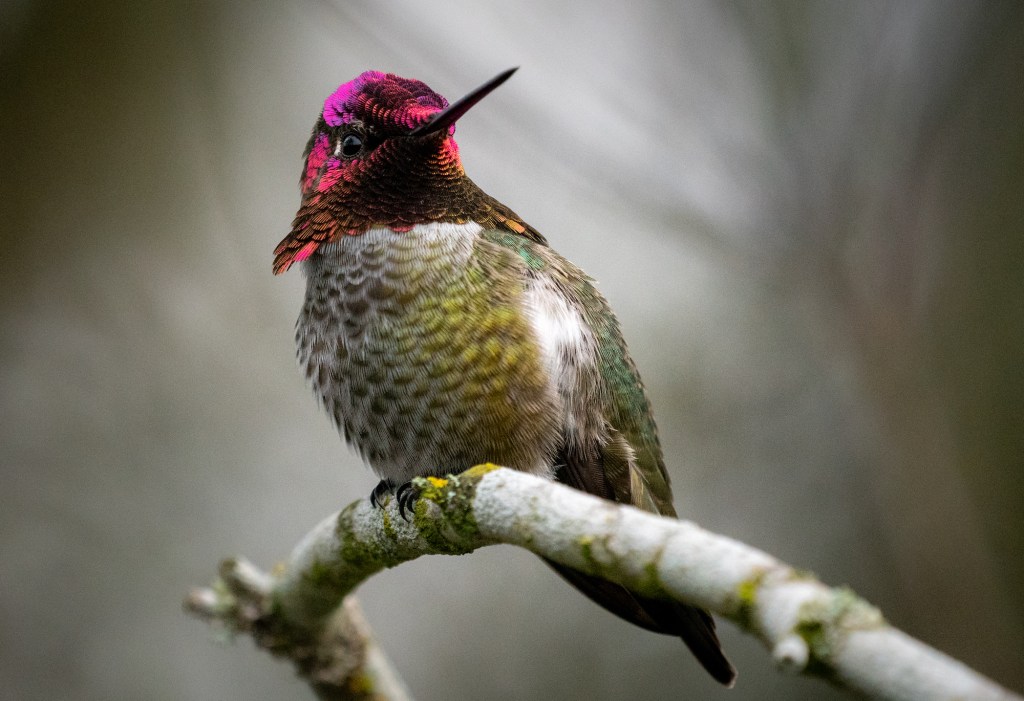



11/27/2023. In Middleton, Wisconsin, we’ve had the pleasure of seeing a male Rufous Hummingbird for over a month now. It has been frequenting the hummingbird feeders at the entry way to Governor Nelson State Part. The staff have been keeping 2 feeders full. We had a warm fall so it was great to see this beautiful hummer. However, he was spotted again today and the temperature has dropped and it was only 21 today and it will be about 10 degrees overnight. I’m worried about this little guy. I don’t think the feeders are heated and there hasn’t been anything blooming for a long time. How can he make it south now when the fall season is here and nothing is blooming for hundreds of miles? I wish him well!
Amazing little creatures !, They bring so much pleasure.